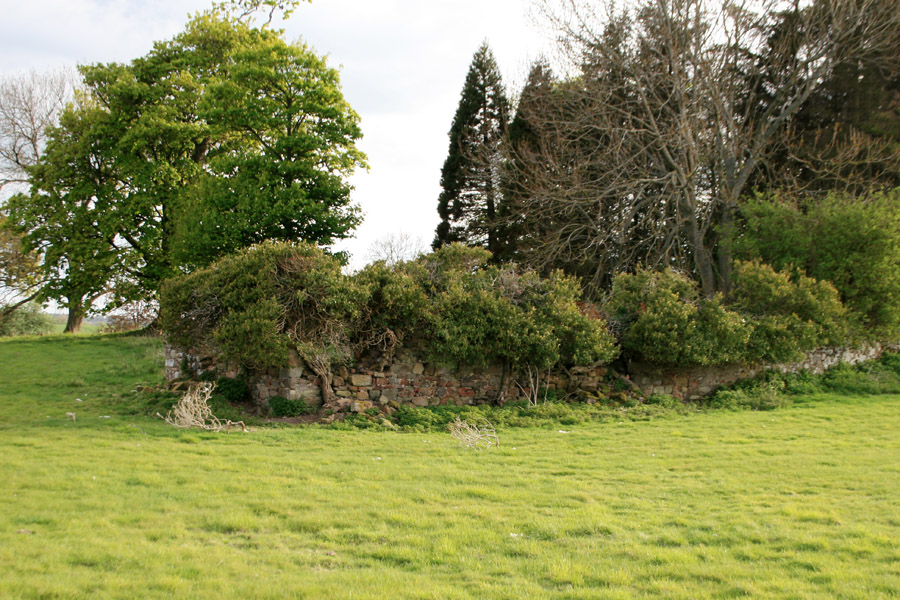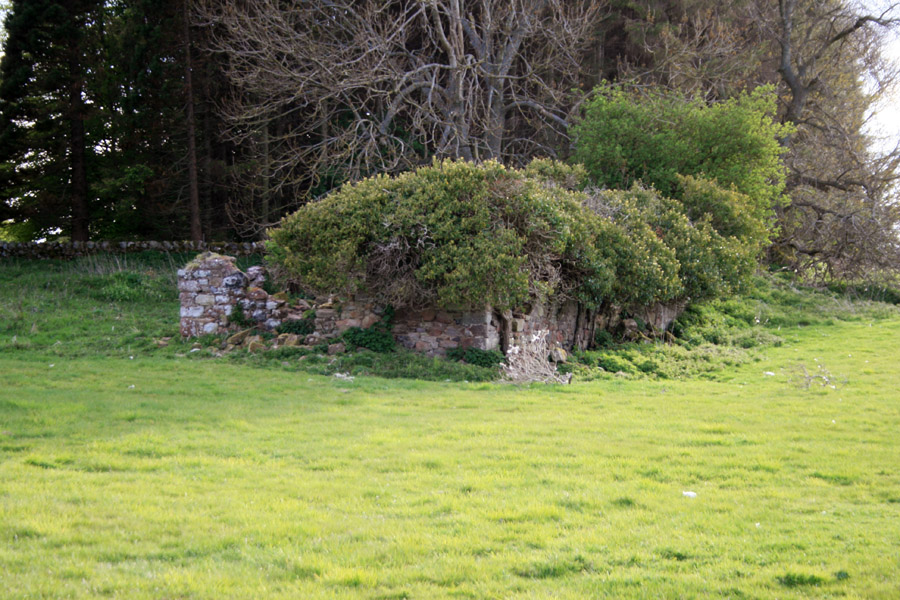

It’s now very easy to pass Edington Castle without knowing it’s there. Partially obscured by bushes and trees, all that remains are sections of the east and south walls, in a small field between the main road and a modern bungalow.
Built from dressed sandstone with walls almost a metre thick, some architectural details still survive, although it is generally in a poor state of preservation. The longest section of wall to the south measures around 26 metres in length.

Running approximately south from the north-east corner of the long wall is a shorter section of the east wall of the castle.

The corner of the castle is now incorporated into a more modern garden dyke, built using stone from the castle.
Edington Castle is thought to have been built some time in the 16th century, following the destruction by English forces of Edington Bastle.
It was surrounded by a deep moat, part of which was apparently still visible in the late 19th century, although nothing now remains of this feature.
A large 17th century doocot with tiled roof and crow-stepped gables once stood to the south east of the castle, but this has also gone.
Edington Castle is marked on Blaeu’s mid-17th century map as Ithingtoun Castle.

Joan Blaeu, Amsterdam, 1654map image courtesy of NLS
It is also marked on Moll’s mid-18th century map as Ithingtoun.

Herman Moll, London, 1745map image courtesy of NLS
Alternative names for Edington Castle
Adintoun; Ithingtoun Castle
Where is Edington Castle?
Edington Castle is in the parish of Chirnside and the county of Berwickshire.
Grid reference: NT 8950 5621
Lat / long: 55.799104, -2.167536










